Not all chainrings fit all cranksets. Most chainrings mount via a four- or five-arm ‘spider’ (the arms/spokes on the crankset). The spacing between these arms differs based on the intended gear range of the crankset, the number of chainrings it has and its intended use.
This size is referred to as bolt circle diameter, or BCD for short. You need to establish the BCD of your crankset if you want to replace your chainrings.
In this guide, we’ll explain how to measure BCD on your crankset, what BCD is and why cranks use different measurements.
We’ve also provided a common crankset cribsheet to ease the job and confirm your results. You can find it at the end of this article.
How to measure BCD
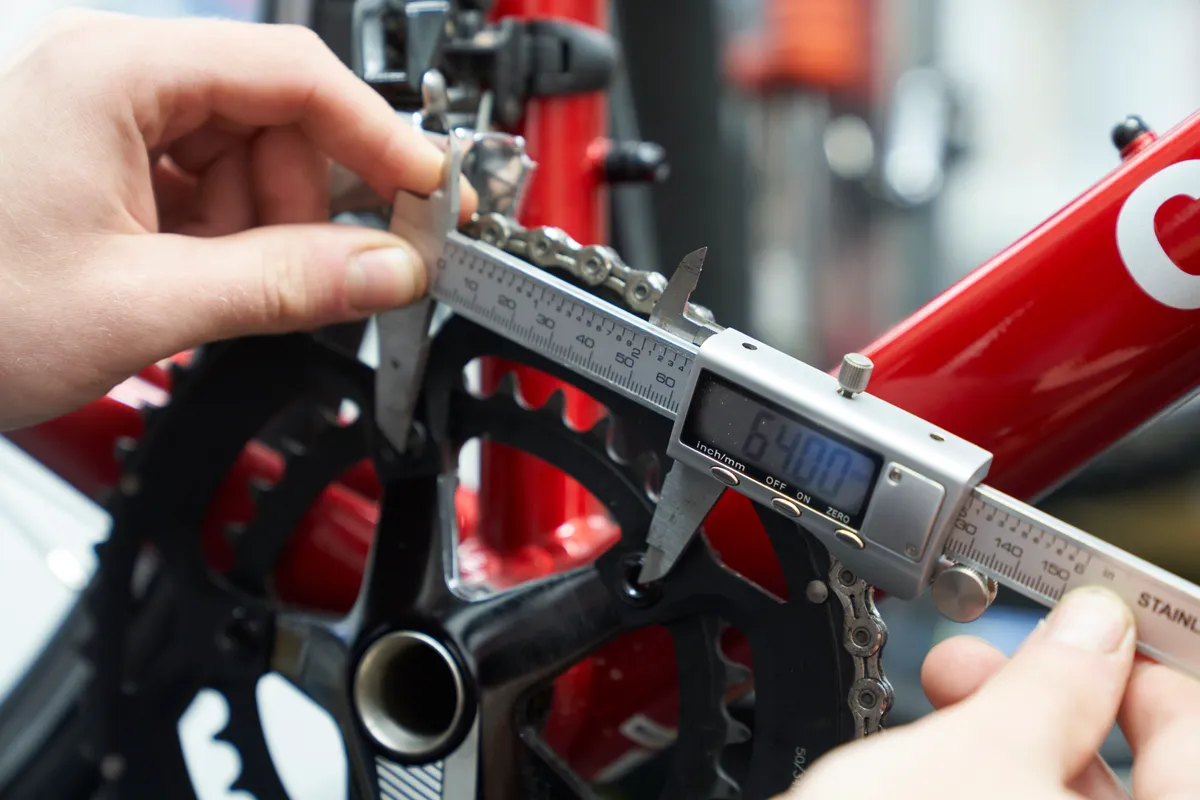
If you’re lucky, the BCD measurement will be engraved or stamped somewhere on the chainring or crankset.
However, this isn’t always the case and the best way to manually measure the BCD is with a vernier caliper, or failing that, a ruler.
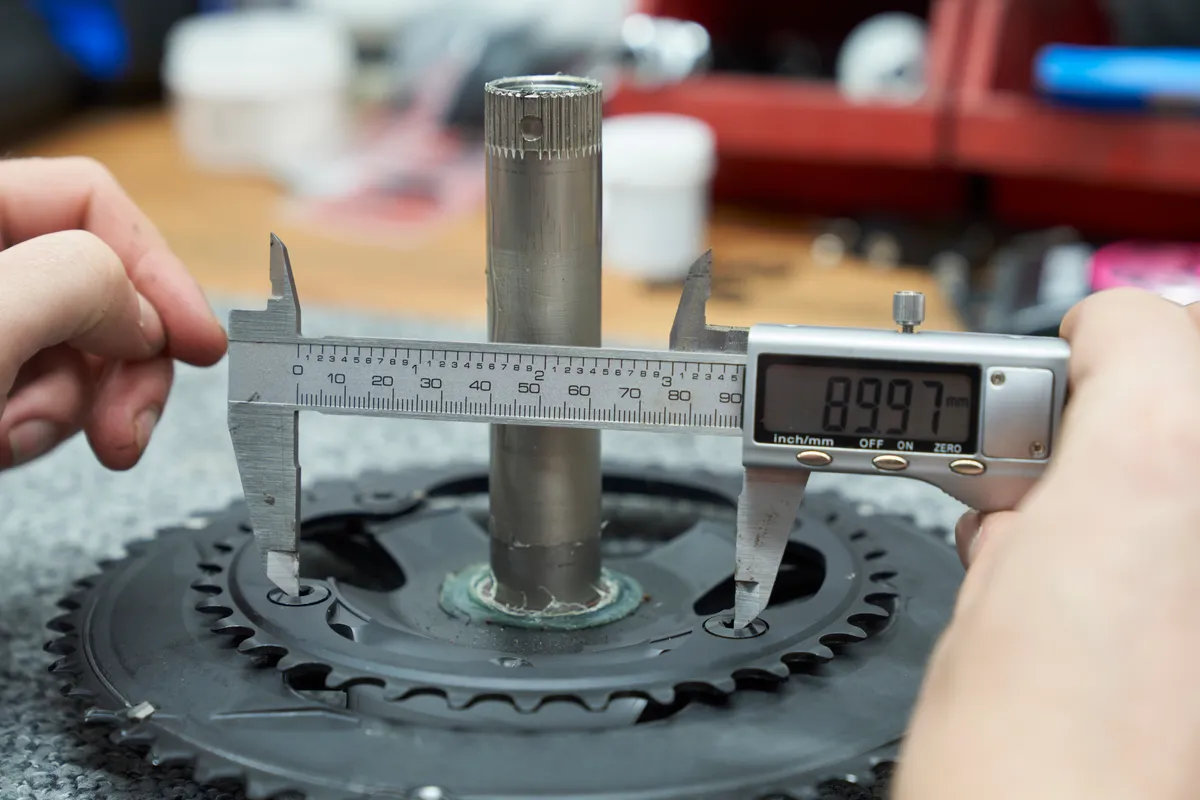
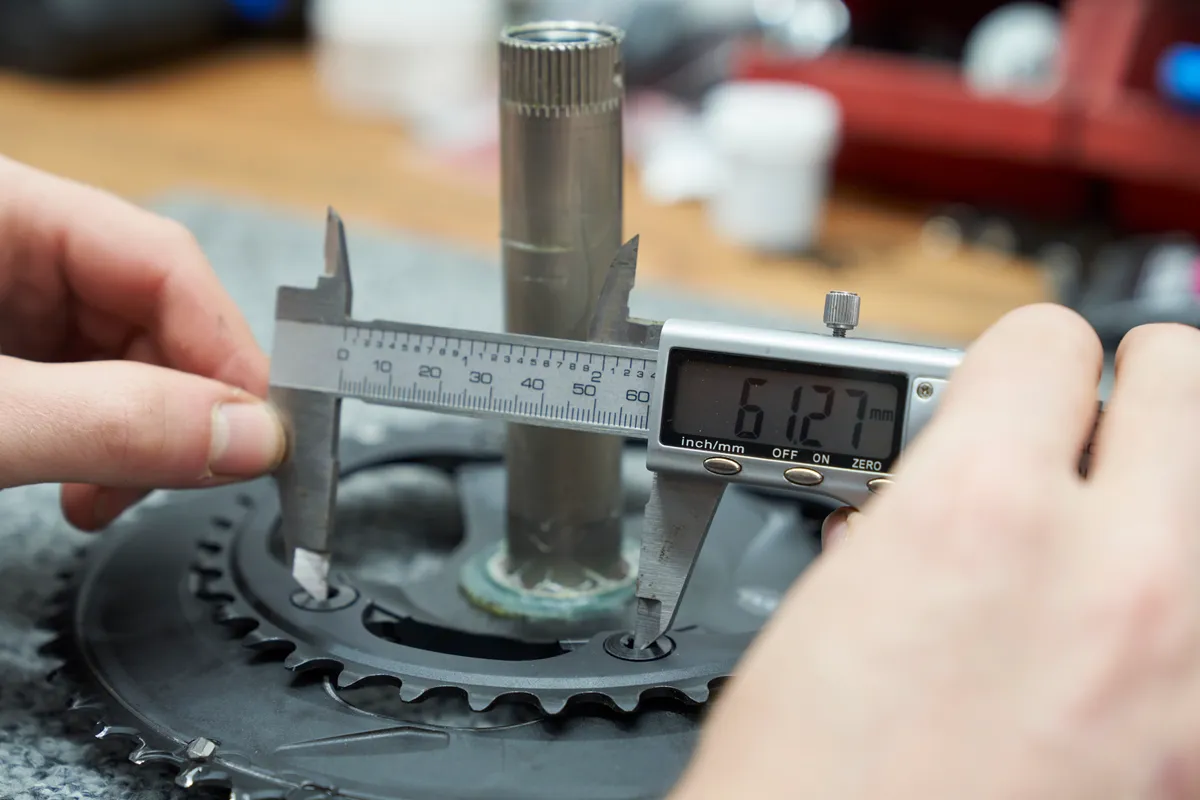
On a crankset with four bolts, you can measure the distance between two bolts directly opposite each other.
On a crankset with five bolts, you’ll need to measure two bolts adjacent to each other then use a look-up table to ascertain the correct BCD:
| Distance between two adjacent bolts on a 5-arm crankset (mm) | BCD (mm) |
|---|---|
| 55.2 | 94 |
| 64.7 | 110 |
| 76.4 | 130 |
| 84.6 | 144 |
Another option is to use a Park Tool Chainring Diameter Gauge CDG-2 – a tool with guides that centres itself on the chainring holes to give you the correct measurement.
You can measure the BCD with the crankset installed on or off the bike.
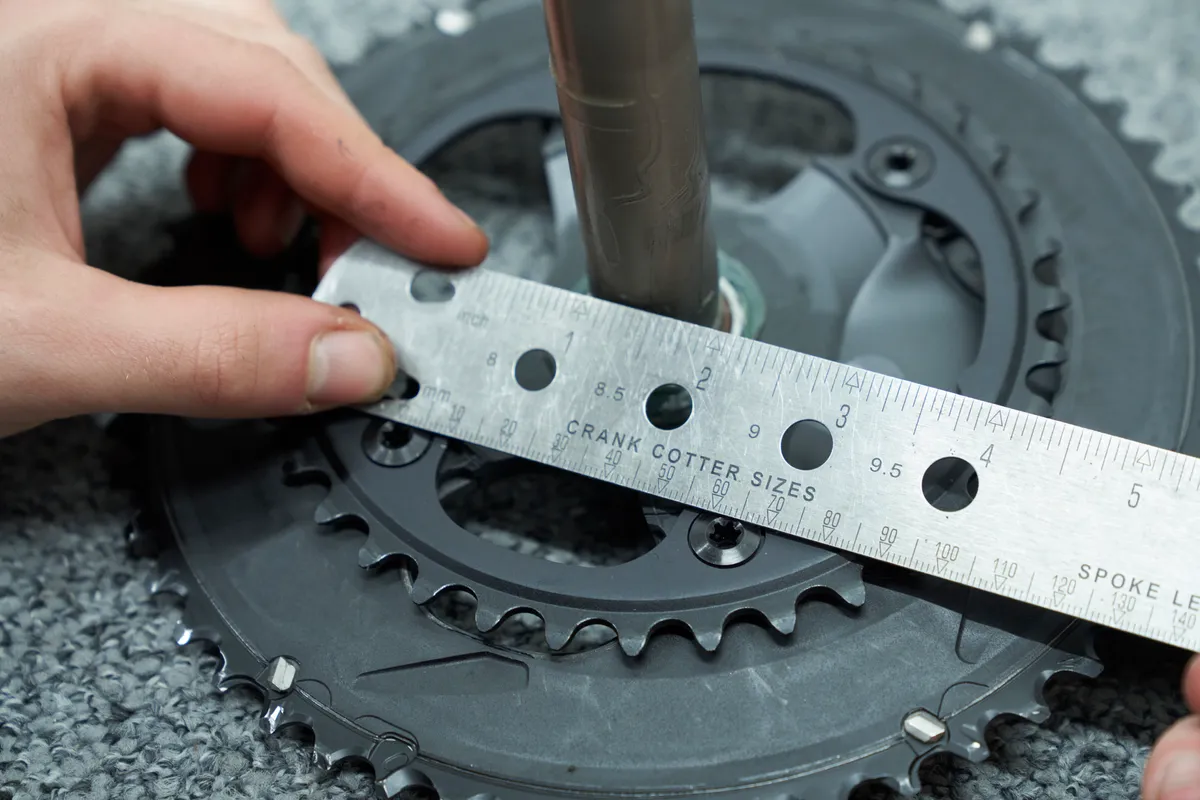
If you’re not sure if your crank uses an asymmetric design, you could check the distance between each of the bolts to make sure they match.
If you’ve measured the bolt spacing but are still not sure, refer to our crib sheet below for a list of common cranksets and BCD sizes.
Common crankset cribsheet
| Crankset | BCD (mm) | Number of bolts |
|---|---|---|
| Shimano Ultegra 6600 / Dura-Ace 7800 | 110 or 130mm, dependent on chainring | 5 |
| Shimano 105 5800, Ultegra 6800, Dura-Ace 9000 | 110mm | 4 |
| Shimano 105 R7000, Ultegra R8000, Dura-Ace R9100 | 110mm | 4 |
| Shimano 105 R7100, Ultegra R8100, Dura-Ace R9200 | 110mm | 4 |
| Shimano GRX 12-speed | 110mm outer, 80mm inner | 4 |
| Shimano GRX 10 and 11-speed | 110mm outer, 80mm inner | 4 |
| Shimano XTR M9000 / XT M8000 / SLX M7000 | 96mm | 4 |
| SRAM XX / XO / GX Eagle | Direct mount | N/A |
| SRAM NX / GX / X1 / XO1 | 94mm | 4 |
| SRAM Rival / Force 1 | 110mm | 5 |
| SRAM Rival 22 | 110mm | 5 |
| SRAM Force / Red 22 | 110 or 130mm, dependent on chainring | 5 |
| SRAM Rival eTap AXS / Force eTap AXS | 107mm | 4 |
| SRAM Red D1 1x | 107mm or Direct mount | 4 |
| SRAM Red eTap AXS / SRAM Force AXS / Apex AXS | Direct mount | N/A |
| SRAM Force / Rival Wide | 94mm | 4 |
| Campagnolo Ekar | 123mm | 4 |
| Campagnolo Chorus 12 | 123mm chainring max, 96mm chainring min | 4 |
| Campagnolo Record 12 / Super Record 12 | 145mm chainring max, 112mm chainring min | 4 |
| Campagnolo Super Record Wireless | 121/88mm asymmetric | 4 |
| Microshift Sword | 100/80mm asymmetric BCD | 4 |
| 3T Torno | 100mm asymmetric BCD | 4 |
What is BCD?
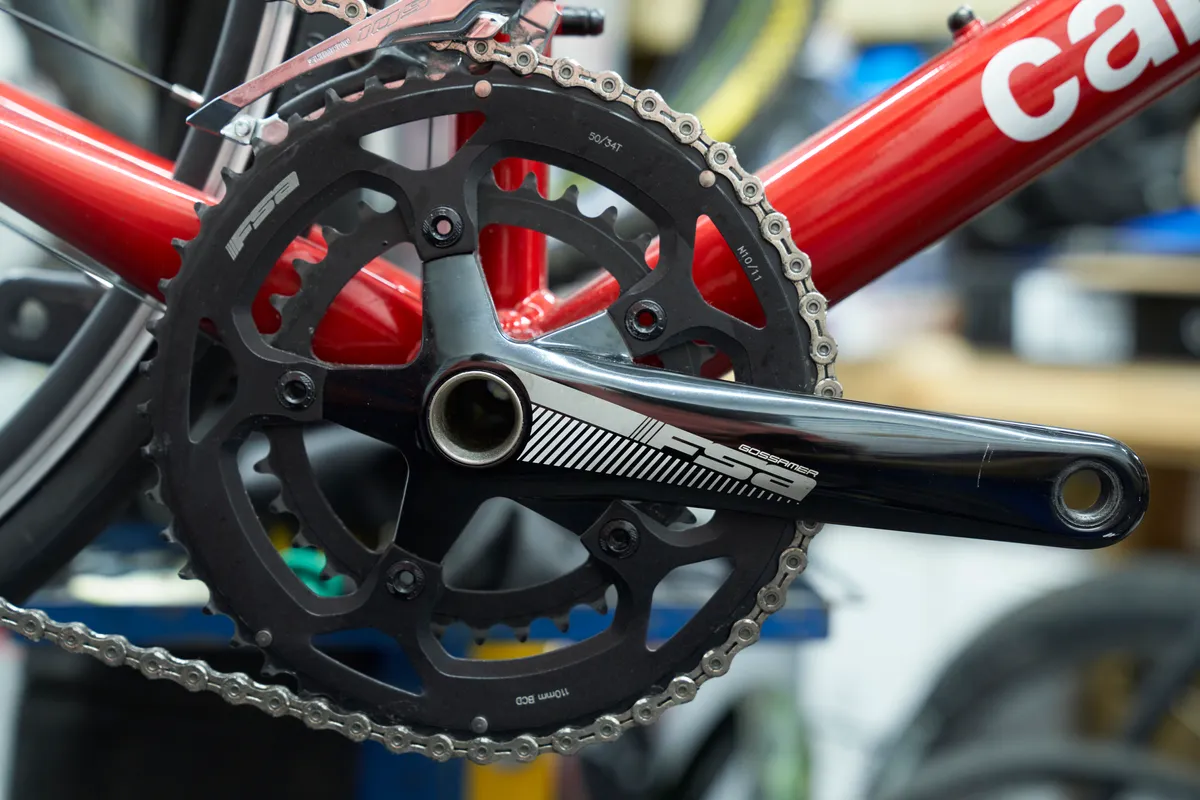
BCD stands for ‘bolt circle diameter’ – the diameter of the circle that goes through the centre of all the bolts on the chainring. This is expressed in millimetres.
The replacement or new chainring you are fitting must have the same BCD as the crankset, and the same positioning of the bolts, in order for it to fit.
Chainrings will typically attach to the crankset via a four- or five-bolt arrangement, which is known as the spider. Three- and six-arm cranksets exist, but these are rare.
To give an example, a Shimano 105 R7100 crankset has a 4-bolt 110mm BCD.
You may also hear some brands (such as Shimano) or riders refer to PCD, which stands for ‘pitch circle diameter’ – this is exactly the same as BCD.
Why do cranks use different BCDs?
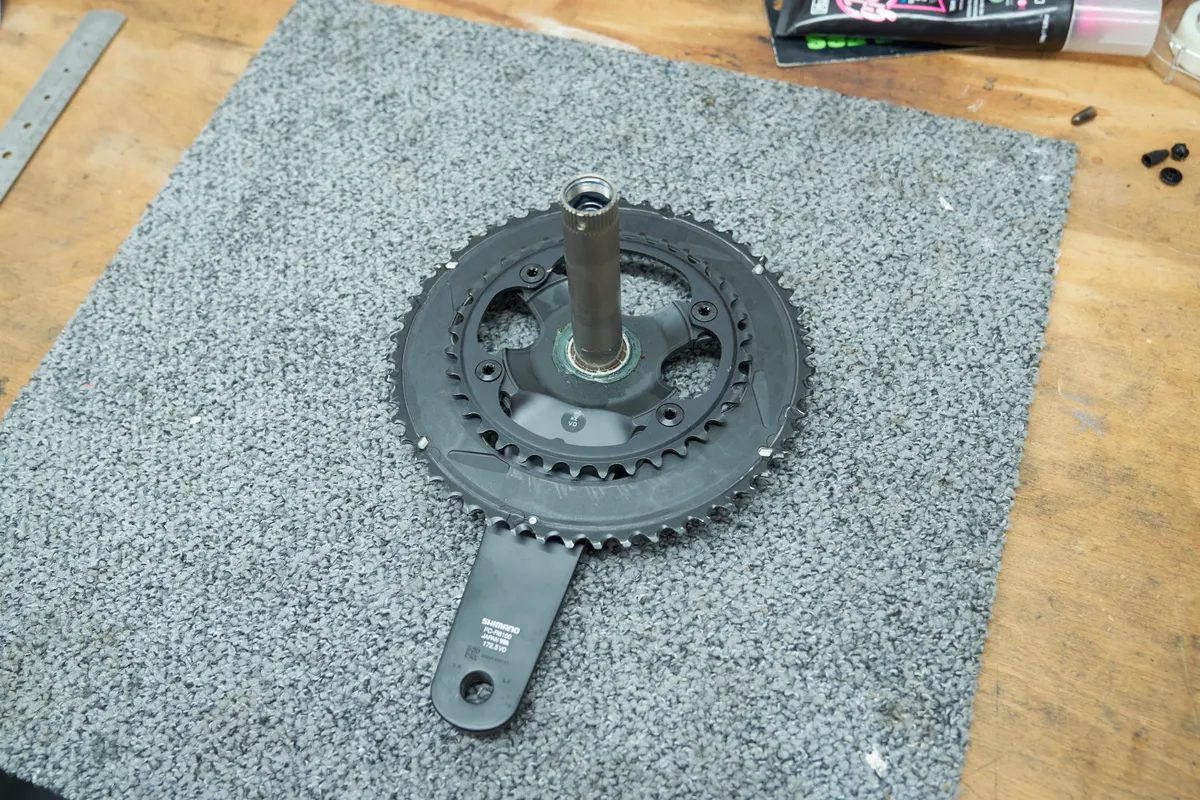
As with many components in the bicycle industry, brands have differing interpretations of what variant of BCD works best for a crankset, hence the whole host of standards.
This is partially to do with chainring stiffness, with track cranks, for example, using a 144mm BCD. This is because they have larger-sized chainrings, enabling the chainring to be stiffer.
Road gearing, conversely, was historically 130mm BCD across the board, but the widescale move to smaller chainrings has seen that change in recent years.
The BCD determines the minimum (though technically, not the maximum) size of a chainring that can fit a given crankset.

Your cranks may have more than one BCD measurement if you are running a double or triple chainring.
For example, a classic triple crankset pairs 110mm BCD outer and middle chainrings with a 96 or 74mm BCD inner chainring.
2x10-speed mountain bike cranks historically relied on a 104 / 64mm BCD.
On Shimano Dura-Ace 7900 / Ultegra 6700-series road bike cranksets, the Japanese brand used a 5-bolt 130mm BCD for its 53/39t and 52/36t chainrings, but a smaller 110mm BCD for the 50/34t compact variant.
That means if, for example, you had a 50/34t crankset with a 110mm BCD, you wouldn’t have been able to swap to 53/39t chainrings, so you had to replace the entire crankset (and vice versa).
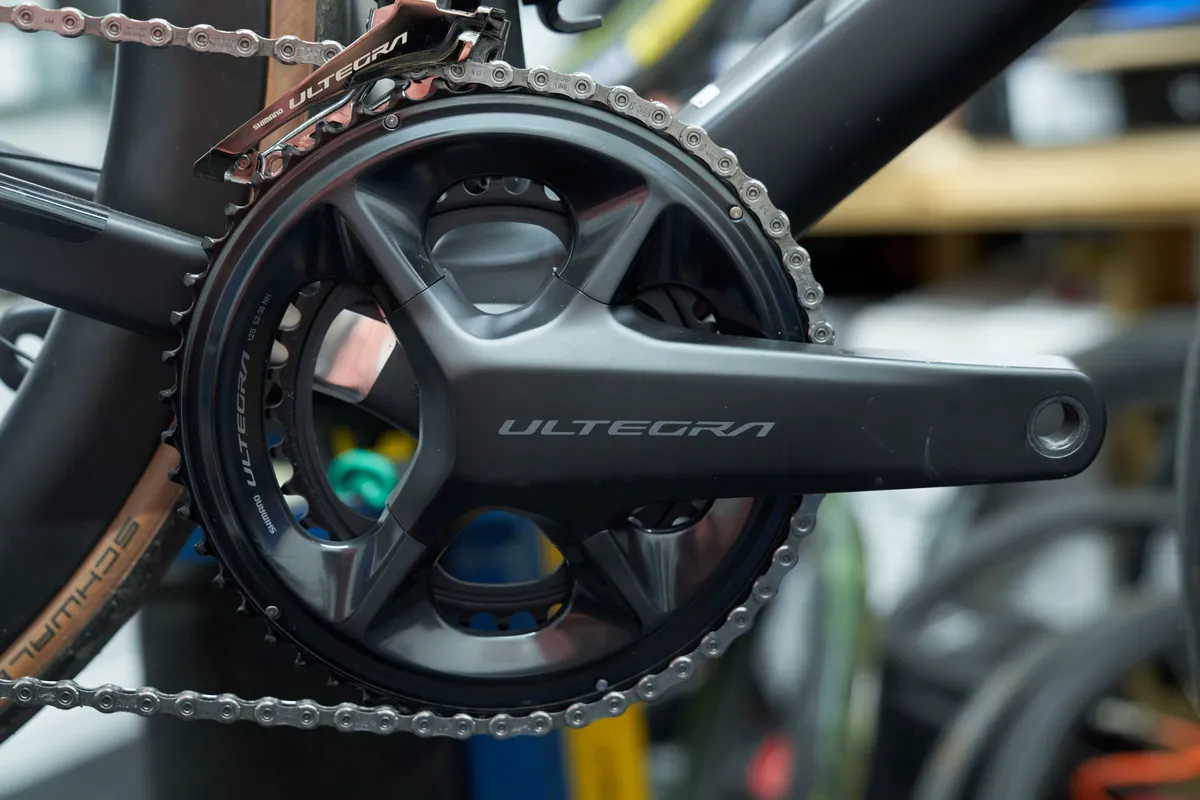
Shimano road cranksets have now thankfully settled on a 4-bolt 110mm BCD for all chainring sizes.
It’s also worth noting that some cranksets use asymmetric bolt patterns designed to work only with specific chainrings.
As a result, any new chainrings will need to match this bolt pattern. A ‘like for like’ replacement may be your best option in this case.
What about direct-mount chainrings?
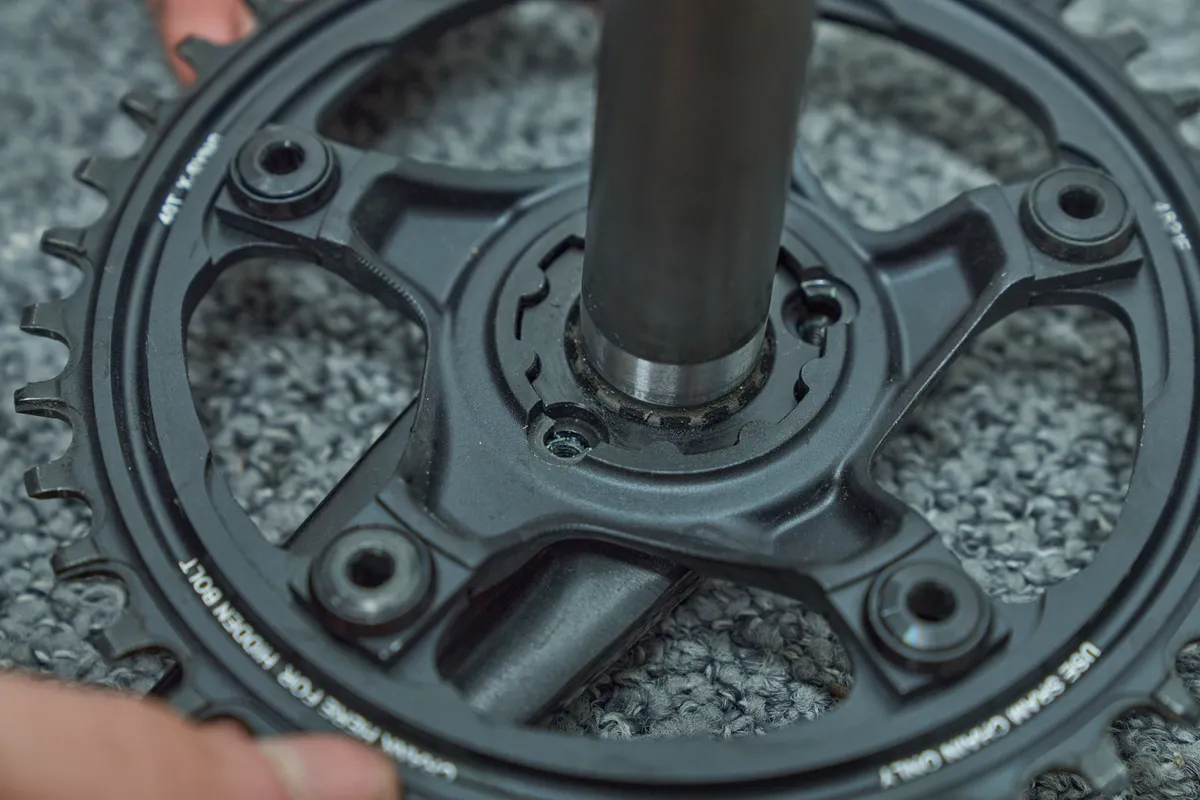
Direct-mount chainrings are increasingly seen across road, gravel and mountain bike cranksets.
Rather than mounting to a spider, direct-mount chainrings mount to a splined interface on the back of the driveside crank arm or spindle.
Easier installation and reduced weight are the key claimed benefits of direct-mount chainrings.
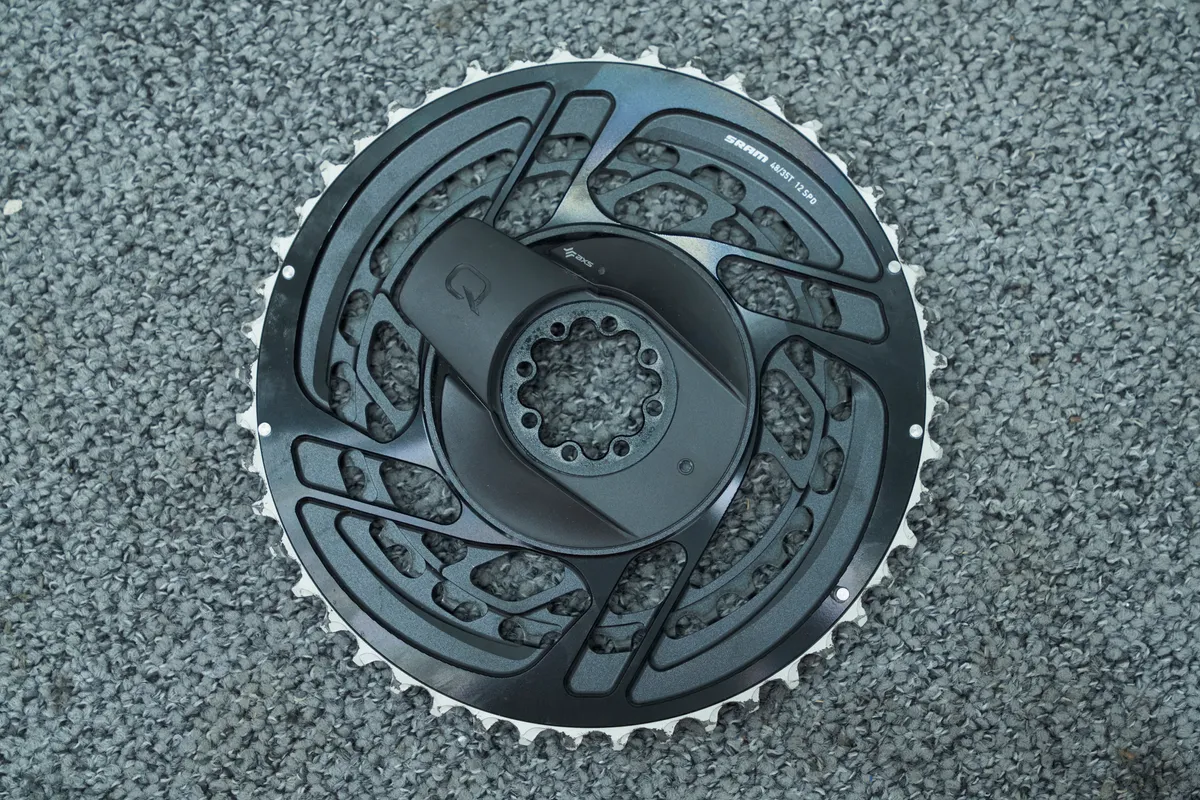
Some premium SRAM cranksets, such as Force AXS and Red AXS, see the two chainrings CNC machined from a single piece of aluminium.
SRAM says it does this to improve the quality of the front shifting, although it means both chainrings must be replaced at the same time when either one wears out.
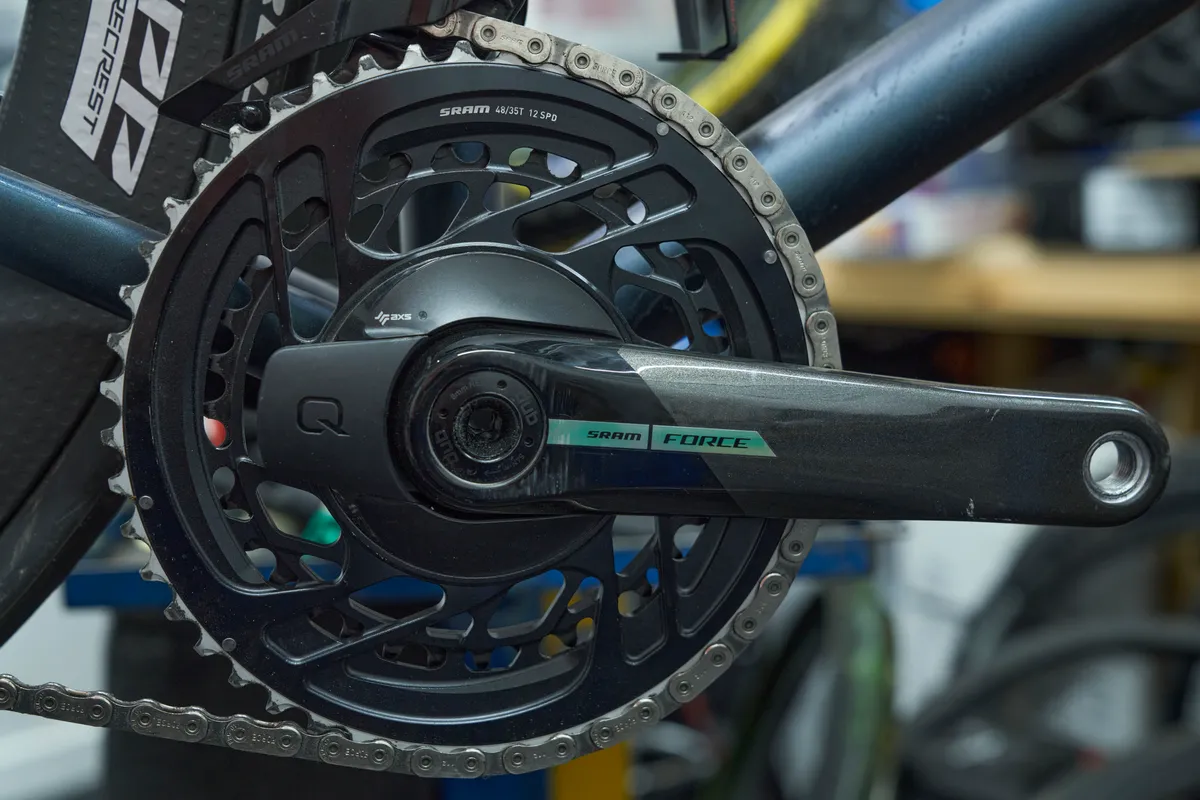
While not technically direct mount, some cheaper cranksets have the chainrings riveted in place, meaning you cannot replace them.
undefinedundefinedundefinedundefinedundefinedundefinedundefinedundefined